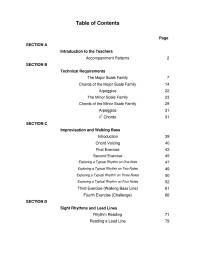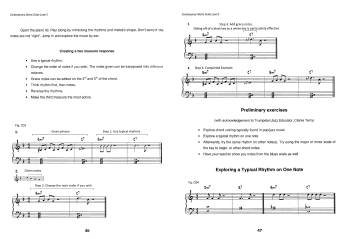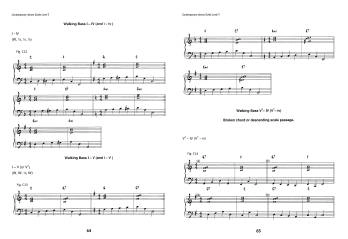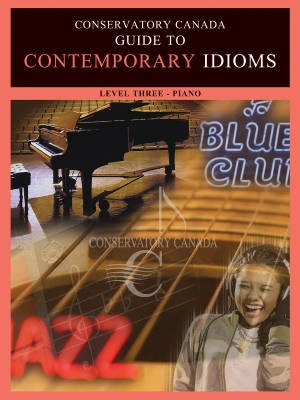Opens in a new window
Conservatory Canada Guide To Contemporary Idioms - Level 3 - Piano - Book

Additional Photos:



- Composer/Author: CONSERVATORY CANADA
- Instrumentation: PIANO
- Model # 139074
Format: Book
Instrumentation: Piano
Level: 3
In the examination sight reading requirements for Contemporary Idioms Level 2, the following instruction is provided:
"The chords are to be played in the left hand with one chord for each bar either using a block chord or accompaniment pattern."
The instruction for Level 3 is similar, but with a significant omission:
"The piano passage is to be performed with one chord for each bar using an accompaniment pattern."
The obvious progression here is to move the student away from playing a single left-hand chord in each bar; even two chords, on the first and third beat, is a simple pattern, but would not likely earn full marks.
Rather than providing more accompaniment patterns, some basic principals that apply to left-hand patterns are emphasized, including finding connections between chords to allow for economical movement and smooth transitions, choosing inversions and voicings that allow for fluid playing, and the use of passing notes and walking bass.
Q & A
There are currently no questions for this product.
Reviews
There are currently no reviews for this product. Be the first to write one!




